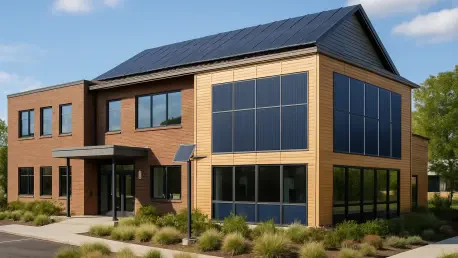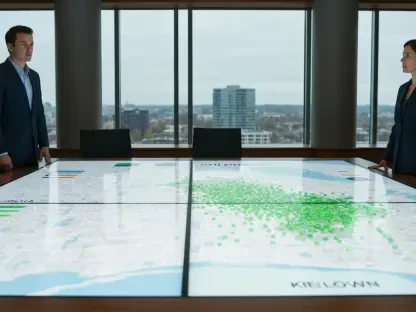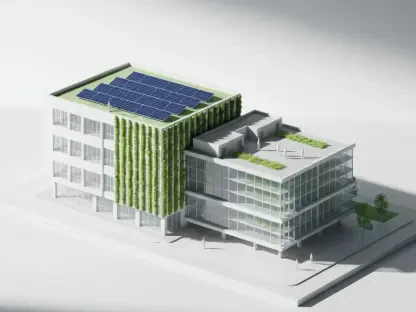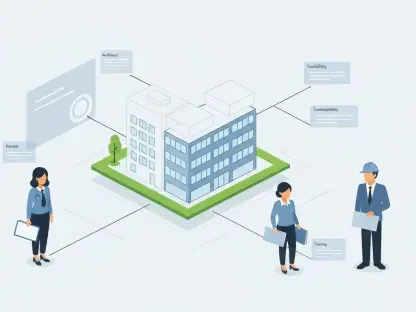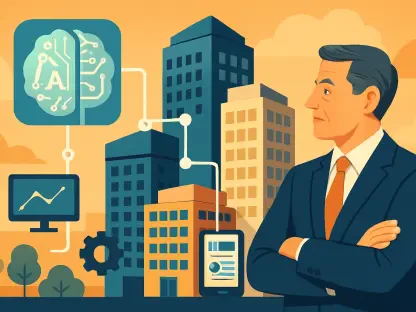I’m thrilled to sit down with Luca Calaraili, a renowned expert in construction, design, and architecture, whose passion for innovative technologies is transforming the way we think about sustainable building practices. With a deep understanding of how to integrate cutting-edge tools into the industry, Luca is at the forefront of the movement to make existing buildings more energy-efficient and environmentally friendly. Today, we’ll dive into the critical topic of achieving Net Zero in the built environment, exploring the importance of retrofitting older structures, the role of smart technologies like connected lighting, and the growing demand for sustainable spaces. Join us as we unpack the challenges and opportunities in decarbonizing our existing infrastructure.
How would you describe the concept of Net Zero for buildings, and why is it especially crucial for older structures?
I’m glad to break this down. Net Zero, in the context of buildings, means that a structure produces as much energy as it consumes, effectively canceling out its carbon footprint through energy efficiency and renewable sources. It’s a vital goal because buildings are responsible for a massive share of global energy use and emissions. Older structures, particularly those built before 2000, are critical to this mission since they often lack modern insulation, efficient heating systems, or updated technologies. Retrofitting these buildings can drastically cut their environmental impact, helping us meet broader climate targets like those set for 2050. It’s not just about new construction—our existing stock holds the key to real change.
Can you elaborate on the building sector’s impact on global energy demand and emissions, and what this tells us about the urgency of action?
Absolutely. The building and construction sector accounts for about 34% of global energy demand and 37% of energy-related emissions, according to recent reports. This comes from a mix of activities—think heating and cooling systems, lighting, and the energy-intensive materials used in construction like concrete and steel. Then there’s the operational side, where older, inefficient buildings keep guzzling energy. These numbers scream urgency. If we don’t address existing buildings through retrofitting, we’re missing a huge opportunity to slash emissions. It’s not just a future problem; it’s a now problem, especially with climate targets looming.
Let’s talk about retrofitting. Can you walk us through what this process entails and how it helps reduce a building’s carbon footprint?
Retrofitting is essentially giving an existing building a sustainability makeover. It involves upgrading systems to improve energy efficiency and reduce emissions. This can mean installing better insulation, replacing outdated gas boilers with heat pumps, adding solar panels, or switching to energy-efficient lighting. These changes cut down on energy waste and reliance on fossil fuels. Even small upgrades, like smart thermostats or LED lights, can make a noticeable dent in a building’s carbon footprint by reducing consumption. It’s about making the building work smarter, not harder, while preserving its core structure.
There’s a push to increase retrofitting rates to 3% annually by 2030. Why is hitting this target so significant for the industry?
This target is a game-changer. Achieving a 3% annual retrofitting rate means we could transform 20% of existing building stock by 2030, which is a massive step toward decarbonization. It’s significant because the majority of buildings we’ll have in 2050 are already standing today. If we don’t act fast, we’re locked into high emissions for decades. The challenge is scale—hitting this rate requires coordination, funding, and overcoming barriers like regulatory hurdles or owner reluctance. But the payoff is huge: lower emissions, better building performance, and even increased property value. It’s a target worth fighting for.
One solution gaining traction is connected lighting. Can you explain how this technology works and why it’s a valuable tool in retrofitting?
Connected lighting is a brilliant innovation—pun intended. Unlike traditional lighting, which is just on or off, connected systems use LED technology paired with sensors and drivers to create a smart, controllable network. You can manage it remotely, dim lights based on occupancy, or adjust them for energy savings. In retrofitting, it’s a low-disruption upgrade since lighting is already everywhere in a building. It cuts energy use significantly—sometimes by 50% or more—and can integrate with other building management systems. It’s not just about illumination; it’s about building intelligence and sustainability into every corner.
With the rising demand for sustainable spaces, how are building owners and investors adapting to these expectations?
The demand for green spaces is undeniable—tenants want energy-efficient, low-carbon buildings, and investors are feeling the pressure to meet market and regulatory expectations. Owners are starting to see retrofitting as a necessity, not an option, to avoid the risk of stranded assets—buildings that lose value because they’re outdated or non-compliant with sustainability standards. Investors are also prioritizing properties with green credentials, as they hold up better in the market. Retrofitting isn’t just about compliance; it’s a smart financial move that boosts a building’s appeal and long-term value in today’s eco-conscious landscape.
Collaboration across the industry seems essential for driving Net Zero goals. How do you see different stakeholders coming together to make this happen?
Collaboration is the backbone of this transition. Architects, engineers, building owners, and even tech providers need to align on shared goals. For instance, architects can design retrofit plans that prioritize efficiency, while engineers implement cutting-edge systems like heat pumps or smart lighting. Owners and landlords must be willing to invest, often with support from sustainable financing options. Partnerships are key—whether it’s through joint ventures or initiatives that pool expertise and resources. When everyone brings their strengths to the table, we can tackle barriers like cost or skills shortages and scale up solutions faster.
Looking ahead, what is your forecast for the future of retrofitting and Net Zero in the building sector?
I’m optimistic but realistic. Retrofitting will become a cornerstone of the industry as regulations tighten and public awareness grows. We’ll likely see more incentives and funding to support these projects, alongside advancements in technology that make retrofits cheaper and more effective. Net Zero will shift from a lofty goal to a standard expectation, especially as younger generations prioritize sustainability. The challenge will be maintaining momentum—ensuring we don’t just hit targets for 2030 but keep pushing beyond. I believe with the right collaboration and innovation, we can turn our existing buildings into assets for a greener future.
